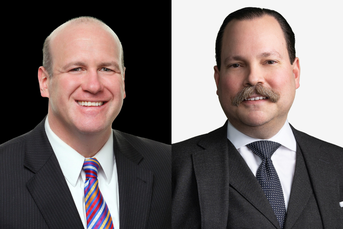Show me the money: Financial advisory trade groups pay handsomely
If you want to make money in the financial advisory business, don't be a financial adviser. Heading groups that advocate for them pays much better. Plus, see what the top brass make.
If you want to make money in the financial advisory business, don’t be a financial adviser. Instead, try working your way up the ladder at one of the handful of trade groups that serve the industry, where pay for CEOs can easily exceed $500,000.
Kevin Keller, chief executive of the Certified Financial Planner Board of Standards Inc., was paid a total of $836,117 last year, according to the CFP Board’s 2014 IRS Form 990, which was filed in November.
Mr. Keller’s compensation declined last year from the $850,210 he earned in 2013, according to the CFP Board’s 2013 Form 990.
Dale Brown, president and chief executive of the Financial Services Institute, a lobbying group representing independent broker-dealers, earned $650,328, according to FSI’s 2014 IRS filing. Cathy Weatherford, president and chief executive of the Insured Retirement Institute, which represents the annuity industry, makes $762,805.
“Some of the [compensation levels] approaching the three-quarters of a million mark are excessive,” said Kashif Ahmed, president of American Private Wealth and a CFP. “These are nonprofits. These aren’t General Electric, where they’re making 14 different things and have 14 divisions across the world.”
Another CFP mark holder was surprised by Mr. Keller’s pay.
“That seems a little high to me, given that their primary source of revenue is licensing CFPs,” said John Power, owner of Power Plans.
But Mr. Power added that his unease with the salary does not reflect his evaluation of Mr. Keller’s leadership of the organization, which sets and enforces the educational, professional and ethical requirements for the CFP designation.
“Kevin’s a good guy,” Mr. Power said. “He’s a very aggressive and effective manager.”
Richard Rojeck, CFP Board chairman, said Mr. Keller’s compensation is determined by the board after input from an independent consultant, who benchmarks it against similar nonprofit financial services and certifying organizations in the Washington, D.C., area, where the CFP Board is based.
The other adviser groups also said they set their leader’s compensation level based on reviewing pay at associations of similar size and mission and assessing the chief executive’s performance annually.
Compared with adviser pay though, these levels are generous.
According to the 2015 InvestmentNews Adviser Compensation and Staffing Study, lead advisers make a median $148,380, while chief executives pull in $410,000.
Other adviser trade groups come closer to these figures, making substantially less than Mr. Keller, Mr. Brown and Ms. Weatherford.
Karen Barr, president and chief executive of the Investment Adviser Association, earned $346,588, although that reflects her initial partial year pay as head of the organization. Her predecessor, David Tittsworth, made $443,217.
Lauren Schadle, executive director and chief executive of the Financial Planning Association, makes $278,811. Geoffrey Brown, chief executive of the National Association of Personal Financial Advisors, makes $171,000.
Those numbers are far below the pay that the head of the Securities Industry and Financial Markets Association makes.
SIFMA’s 2012 IRS Form 990 shows it paid its CEO at the time, T. Timothy Ryan Jr., more than $2.5 million. The group, which represents wirehouses and other large broker-dealers, did not respond to a request for its latest Form 990.
Howard Erman, president of Erman Retirement Advisory, was taken aback by some of the salary levels at adviser groups, but doesn’t begrudge the executive’s their pay because “they’re doing their best to put their finger in the dike trying to minimize the impact of regulations,” he said.
One adviser thought the interest-group leaders would make more.
“I am surprised [the salaries] are that low,” said Scot Hanson, a CFP at EFS Advisors. “I would have expected them to be higher.”
Certain federally tax-exempt organizations must file a Form 990 annually with the IRS. The document, which covers the previous calendar or tax year, includes information about the organization’s mission, personnel and finances.
Learn more about reprints and licensing for this article.








